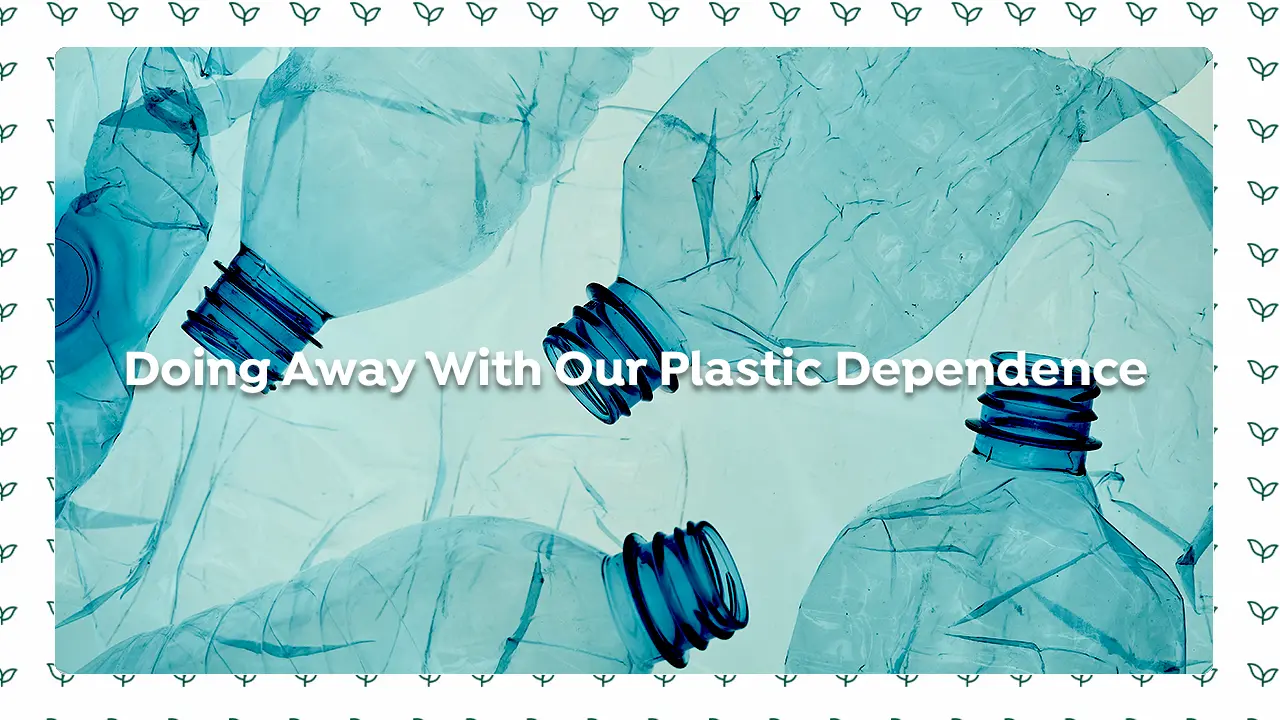Last week, I wrote about how we can reduce our travel emissions as part of a series I’m doing where I’m just putting ideas out there to see what sticks. Today, we’re going to discuss the possibility of doing away with plastic. Yes, that thing that is present in just about any product out there – from the cups we use, to our dinner plates and the list goes on. But is this endeavor a realistic goal or just an unattainable dream? Today, we’ll explore the challenges we face, potential solutions, and the crucial importance of tackling our plastic obsession.
First, a history lesson.
How Did Plastic Come To Be?
Humans have been relying on plastics for a very long time, dating back all the way to 1869 when the first polymer was invented. Since then, plastic has been used for virtually everything — from packaging and storage, construction materials, automotive components and electronics, to textiles, household items, and medical supplies due to its low cost, lightweight yet durable properties, and versatility for a wide range of applications. While plastic revolutionized industries and consumer products, its extensive usage and poor waste management practices have led to several growing environmental concerns.
Why Plastics Are A Growing Concern

Plastic pollution has reached alarming levels, with devastating consequences for ecosystems and human health. From the enormous islands of floating plastic in our oceans to the microplastics present in our food and water, the impact is far-reaching. Plastic also takes hundreds of years to decompose, contributing to environmental degradation and endangering wildlife. This realization has propelled individuals, organizations, and governments to seek ways to eliminate or reduce plastic consumption. Here are the key reasons why plastics are a growing concern:
- Environmental Impact:
Plastics do not biodegrade but instead break down into smaller fragments, persisting in the environment for hundreds of years. These microplastics can enter water bodies, contaminating marine habitats and threatening marine life. Plastic waste can also clog drainage systems, contribute to urban flooding, and degrade soil health. - Wildlife Endangerment:
Plastics pose a significant risk to wildlife. Marine animals can mistake plastic debris for food, leading to ingestion and often resulting in fatal consequences. Wildlife also occasionally become entangled in plastic items, such as fishing nets and six-pack rings. The harm caused to marine and terrestrial creatures has severe implications for biodiversity and the overall health of ecosystems. - Microplastics and Human Health:
The pervasive presence of microplastics in our environment raises concerns for human health. Microplastics have been found in various food sources, such as seafood and drinking water, leading to potential ingestion by humans. The long-term effects of microplastic ingestion on human health are still being researched, but it is a growing concern due to the toxic chemicals that can be absorbed by these microplastics. - Pollution throughout the Lifecycle:
The environmental impact of plastics extends beyond their use phase. The production of plastics involves extracting fossil fuels, releasing greenhouse gases and contributing to climate change. Furthermore, the disposal and incineration of plastics emit harmful pollutants into the air, increasing air pollution and its associated health risks. - Recycling Challenges:
While recycling is often seen as a solution to plastic waste, it presents challenges of its own. Many types of plastics are difficult to recycle, leading to low recycling rates and a significant amount of plastic ending up in landfills. To make matters worse, the cost and energy required for plastic recycling can be high, making it an economically and environmentally less viable option compared to reducing plastic consumption and promoting alternative materials. - Disposable Culture:
The rise of a disposable culture, driven by the convenience and affordability of plastics, has further exacerbated the plastic waste problem. Single-use plastic items, such as bags, packaging, and utensils, are designed for convenience but have long-lasting environmental consequences. Shifting away from this disposable mindset is crucial to reducing plastic consumption and waste generation.
Challenges to Overcome
With the problems posed by plastics in mind, the next logical step would be to try and find ways to cut down (or completely eliminate) the use of plastic, right? Well, yes and no. There are a couple of challenges that have to be addressed before we can realistically do that. They are:
- Consumer Behavior and Perception:
Many consumers have developed a deep-rooted reliance on plastic due to its convenience and low cost. Changing these behavioral patterns is no simple task. It requires education, awareness campaigns, and the availability of viable alternatives to ensure seamless transitions away from plastic. - Infrastructure and Supply Chains Issues:
Plastic is deeply embedded in our modern infrastructure and supply chains. From packaging and transportation to healthcare and construction, eliminating plastic requires rethinking and redesigning these systems. This shift would require investments in research, development, and infrastructure to support the transition to more sustainable materials. - Cost and Affordability:
One of the challenges in eliminating plastic is the cost and affordability of alternative materials. Sustainable alternatives can be more expensive, especially during the transition phase. Addressing this challenge requires investment in research and development to drive down the cost of alternative materials, as well as exploring economic incentives for businesses to adopt sustainable practices. - Economic Considerations:
The plastic industry is a multi-billion-dollar sector, providing employment to millions worldwide. Transitioning away from plastic may have economic implications, requiring careful planning and consideration. Balancing environmental concerns with economic realities is essential to ensure a smooth transition. - Global Supply Chain and Trade:
The global nature of the plastic industry and supply chains presents a challenge in achieving a plastic-free world. International coordination and cooperation is needed to establish consistent regulations and standards across regions. Strengthening global trading policies and agreements can also incentivize sustainable practices and discourage the use of excessive plastic packaging. - Consumer Education and Awareness:
Many consumers are unaware of the full impact of plastic pollution and the availability of alternative options. Educating the public about the environmental consequences of plastic, as well as promoting the benefits and accessibility of sustainable alternatives, is vital. Awareness campaigns, educational programs, and clear labeling can help inform and guide consumer choices towards more sustainable options.
Potential Solutions
Addressing our plastic dependence requires a multi-faceted approach involving various stakeholders — such as promoting the use of biodegradable and compostable alternatives to traditional plastic, encouraging the development of innovative packaging materials made from renewable resources, implementing stricter regulations on single-use plastics, incentivizing companies to adopt sustainable packaging practices, investing in research and development for eco-friendly alternatives.
- Reduce and Reuse:
A quick transition away from a single-use culture is urgently needed. We need to start promoting practices that prioritize waste reduction and reuse. For example, encouraging consumers to opt for reusable products, such as shopping bags, water bottles, and coffee cups, can significantly reduce plastic consumption. - Innovation and Alternative Materials:
We need to invest a lot more in research and development of sustainable materials. Bioplastics, for instance, offer a potential alternative to conventional plastics, since they are derived from renewable resources such as vegetable oil. - Government Policies and Regulations:
Governments play a crucial role in addressing plastic pollution. Implementing policies and regulations that restrict single-use plastics, promote producer responsibility, and encourage innovation can drive significant change. Collaborations between governments, businesses, and NGOs can lead to effective strategies in tackling plastic dependence. - Collaboration between Industries:
All hands on deck! Since the use of plastic cuts across several industries, addressing the challenges posed by its usage requires collaboration across these industries. Partnerships between manufacturers, retailers, waste management companies, and research institutions are pivotal in driving the development, adoption, and scalability of sustainable alternatives. - Extended Producer Responsibility (EPR):
Implementing Extended Producer Responsibility legislation can hold producers accountable for the entire lifecycle of their products, including proper waste management and promoting recycling. EPR policies can incentivize companies to design products with an emphasis on recyclability, reusability, and reduced plastic content.
The Importance of Taking Action
The consequences of plastic pollution are too severe to ignore. Plastic pollution affects ecosystems and disrupts delicate ecological balance, leading to widespread biodiversity loss and long-term ecological damage. By tackling plastic pollution, we not only protect the environment and biodiversity but also pave the way for a more sustainable and resilient future for generations to come. The severity of the consequences demands our attention, and it is our responsibility to take decisive action to combat plastic pollution in all its forms.
So, can we actually totally eliminate plastics?
While achieving a world completely free of plastic is a complex and challenging journey, it is possible to significantly reduce our dependence on this material through a combination of measures such as promoting recycling, choosing to buy plastic alternatives like paper bags instead of plastic bags, pushing legislation that forces companies to produce their goods with the dangers of plastic in mind, investing heavily in technology/innovation that will help develop plastic alternatives faster and fostering consumer awareness and behavior change.
Conclusion
Breaking free from our plastic addiction is undoubtedly a complex task that requires determination and collaboration on a global scale. While eliminating plastic completely may be challenging, reducing our dependence and finding sustainable alternatives is a realistic goal worth pursuing. By transforming consumer behavior, supporting innovation, and implementing effective policies, we can steer our society towards a more sustainable and plastic-conscious future. Together, we can turn the dream of a plastic-free world into a reality.

